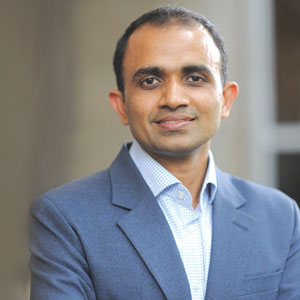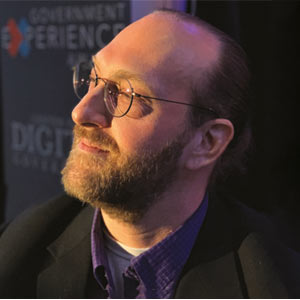THANK YOU FOR SUBSCRIBING

Andrew Wilson, CIO, Accenture
Only a few decades ago, it would have been inconceivable for employees to collaborate in real time across continents. Now, teleworking and video conferencing are commonplace, and businesses rely on a wide range of social tools to facilitate communication between employees, clients and consumers around the globe.
Social collaboration is an evolving business model that is demanding different ways of not just communicating, but how we undertake work, how we measure value and how we connect teams—and it requires IT organizations to take different and speedier approaches that go beyond the classic enablement of IT. However, navigating the age of corporate social enterprise is not without its challenges. With so many choices and such limited data, how can you be sure your approach will yield the greatest results for your business?
Here are five common pitfalls to avoid when planning for social collaboration:
Paradox of Choice
Do your employees struggle to manage all the social collaboration tools at their disposal?
In their eagerness to embrace social, many companies adopt too many platforms at once, leading to an overload of systems. Instead of collaborating with their peers, employees feel stressed and confused over which platform to use and when. From a business perspective, this means missed opportunities for interaction, inefficiency, and poor performance.
When developing your social strategy, there is no urgency in adopting every new technology that emerges in the market. Instead, be selective about the software you choose, making sure to consider each addition not as an individual offering but as part of an integrated framework and take the time to educate your employees on the benefits and applications of their use. The goal is to achieve a seamless user experience, where employees can transition smoothly and intuitively between platforms.
Slow Systems Rollout
Does it take forever for your business to adopt new software? Do all requests go through a long and arduous vetting process.
“The goal is to achieve a seamless user experience, where employees can transition smoothly and intuitively between platforms”
Instead of going through time-consuming processes of evaluating a social platform, companies should consider trial and error to determine what tools best suit their needs. Pilot programs or “test-runs” are a good way to assess the viability of social platforms on a small scale, by providing a quick and accurate snapshot of how a broader rollout might look. Since the tech landscape is evolving so rapidly, particularly in the social collaboration space, employers run the risk of investing time and money into programs that will quickly become obsolete. When evaluation happens on an accelerated timeline, however, this becomes less of a concern.
Transitioning to a “trial and error” system will also necessitate a fundamental shift in how your company measures value. Instead of focusing on the number of users a platform has, employers will have to consider user aengagement: Are employees actively participating in dialogue and sharing content? If not, it may be time to move on.
Glacial Adoption Rates
Do your social platforms suffer from a lack of users? Switching between intuitive tools used at home to legacy technology used in the workplace can be frustrating for employees and time-consuming from a training perspective. If your company chooses software that is difficult to use, staff may feel little incentive to participate.
Companies with successful social enterprise programs rely heavily on what is known as the consumerization of IT. In other words, these companies invest in collaboration tools that closely resemble those used by employees in their private lives. For instance, our internal employee communications platform contains a newsfeed and separate profile pages for each employee. This strategy greatly reduces the time it takes for employees to master the software and increases the likelihood of broad adoption and engagement.
Information Overload
Have you ever heard a friend or a loved one say that they waste time on social media? It’s possible to spend hours perusing Facebook, Twitter and Instagram and still not digest all the available content. Meanwhile, how much of what you’re reading is truly worthwhile?
Managing the “signal to noise ratio” is another challenge associated with corporate social enterprise. If employees are spending too much time on social platforms without being able to quickly and clearly get the most relevant information, they may no longer see the benefit of a connected platform—and it may be time to re-evaluate your strategy.
One way to manage your signal to noise ratio is to share content in easily-digestible segments. Instead of posting an hour long video, offer five or ten minute clips that are organized according to subject matter. In this way, employees can access information that matters most to them without having to sift through the superfluous.
Siloed Applications
How can you expand your social collaboration capabilities without considering how they fit into your broader business plan?
Many companies think of social collaboration as a destination or end-goal, rather than an integral part of the process. Successful businesses, however, recognize that collaboration must be woven into everyday operations, a part of the corporate fabric rather than a separate resource. As you develop your social strategy, keep in mind how each piece of technology fits into the larger vision for your business. The key is to harness the power of collaboration for the benefit of the larger organization. These tools have the potential to bring enormous benefit to your employees and clients, but only if they’re interconnected. Otherwise, you might as well be shouting into the void.
Weekly Brief
I agree We use cookies on this website to enhance your user experience. By clicking any link on this page you are giving your consent for us to set cookies. More info
Read Also
Artificial Intelligence - Myths And Truths
Sustainable Future through Innovative Technology Solutions
The Future Relies on Augmented AI
Digitalization with the use of digital technologies/Improving business through digital technologies
How Marco's Pizza Leaned On Technology To Succeed Amid The Pandemic By Quickly Pivoting To Contact-Free Delivery And Curbside Carryout
Bunnings Diy Digital Transformation
For a Smarter City: Trust the Data, Ignore the Hype
Smart Community Innovation for the Post Pandemic





















